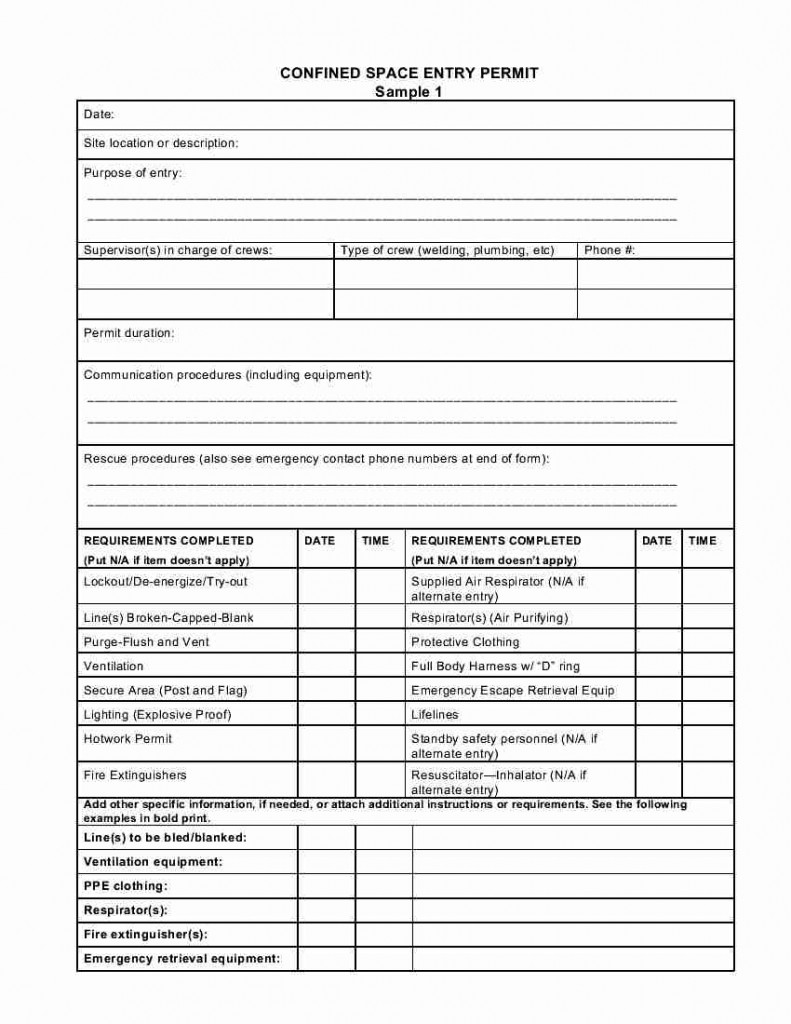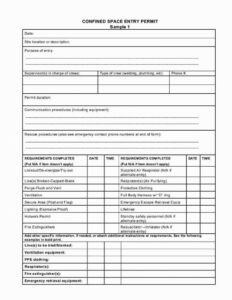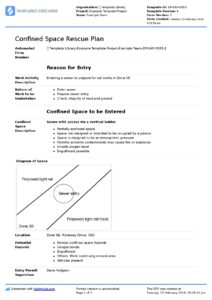Are you looking for a comprehensive OSHA confined space program template to help you establish a compliant safety program? Navigating the complexities of confined space regulations can be challenging, and having a well-structured template can streamline the process.
This article will provide you with a detailed overview of an OSHA confined space program template, highlighting key components, best practices, and implementation considerations. We will also delve into the importance of regular review and updates to ensure your program remains effective over time.

Understanding the OSHA Confined Space Program Template
An OSHA confined space program template serves as a roadmap for developing and implementing a comprehensive safety program that meets the requirements outlined by the Occupational Safety and Health Administration (OSHA). The template typically includes sections that cover:
- Program overview and purpose
- Hazard identification and assessment
- Entry procedures and precautions
- Rescue and emergency response
- Training and certification
- Documentation and recordkeeping
Each section provides guidance on specific aspects of confined space safety, such as identifying potential hazards, establishing safe entry procedures, and ensuring adequate training for employees involved in confined space operations.
Essential Elements of an Effective Confined Space Program
To create an effective OSHA confined space program, it is crucial to address the following elements:
- Comprehensive Hazard Assessment: Thoroughly identify and evaluate all potential hazards associated with confined spaces, including atmospheric hazards (e.g., oxygen deficiency, toxic gases), physical hazards (e.g., slippery surfaces, exposed machinery), and biological hazards (e.g., mold, bacteria).
- Established Entry Procedures: Develop clear and detailed procedures for safe entry into confined spaces, including proper ventilation, atmospheric testing, and the use of personal protective equipment (PPE).
- Emergency Response Plan: Establish a comprehensive emergency response plan that outlines procedures for rescue and medical treatment in case of an incident or accident within a confined space.
- Training and Certification: Provide comprehensive training to employees who will be working in confined spaces, covering topics such as hazard recognition, entry procedures, and emergency response. Ensure employees are certified before permitting them to enter confined spaces.
- Regular Inspection and Maintenance: Regularly inspect and maintain confined spaces to ensure they remain safe for entry. Address any identified deficiencies promptly and take necessary corrective actions.
By addressing these elements and incorporating them into your OSHA confined space program, you can effectively manage the risks associated with confined space operations and ensure the safety of your employees.
Remember, the OSHA confined space program template is a valuable tool, but it is only a starting point. To create a truly effective and compliant program, it is essential to tailor it to the specific needs of your workplace and operations. Regular review and updates are crucial to ensure your program remains current with evolving regulations and best practices, ultimately safeguarding your employees’ well-being.


